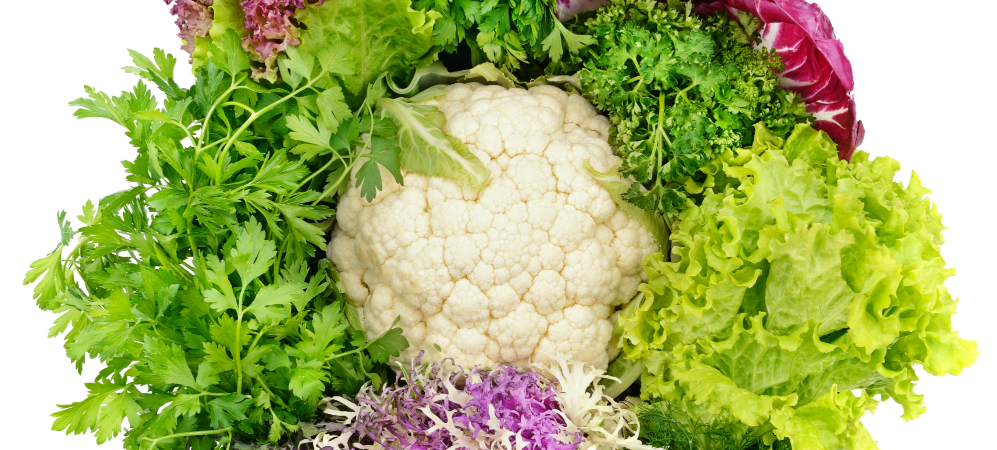More Greens Please!
If your idea of greens is a limp leaf of iceberg lettuce on your burger, it’s time to up your game and discover the wonderful world of highly nutritious, and highly delicious mizuna, kale, spinach, chard and other leafy greens.
These plants are teeming with goodness, and are increasingly found as a central feature on high-end restaurant menus. Top tier chefs have moved beyond meat as the focus of a dish, and have crafted delicious, greens-focused meals to highlight the wonders of locally grown leaves. Kale, for example, has enjoyed quite the renaissance in recent years, but if you’ve eschewed kale because you associate it with a certain kind of food snobbery, you are doing yourself a disservice; why, after all, should hipsters have all the best nutrition?
Salad Greens: Moving Beyond Lettuce
These days, salads have moved beyond just a couple of iceberg or romaine lettuce leaves with assorted veggies thrown on top. With such a wide array of nutritious greens available, it’s time to start expanding your salad horizons!
Hardier leafy greens like kale, spinach, chard and collard greens can all benefit from a little steaming; otherwise look for younger and tender versions if you want to include them in a salad raw. When using raw kale, it’s a great idea to massage the leaves so as to break down the cell walls to make the nutrients more bioavailable in a salad. Give the leaves a scrunch with your hands and you’ll be able to see the kale turn a more vibrant green.
Sautee, Steam or Boil Your Greens for Many Uses
Spinach doesn’t need massaging, and nor do chard, mizuna or watercress (which can also be sautéed – try them in slightly sweetened sesame oil for a delicious side dish). Collard greens and cabbage can be finely chopped for inclusion in a salad, or can be boiled, sautéed, or even used to make vegetable and Szechuan tofu stir fry wraps if you want to get really creative (use toothpicks to hold the wraps together as you make them, or leave them open for people to fold themselves, like tacos).
Watercress soup is another great way to get more leafy greens in your diet, as is nettle soup if you’re brave and have some good gardening gloves. Both of these plants contain vitamin C, vitamin A (as beta-carotene), calcium, vitamin K, magnesium, folate (folic acid), potassium and many more nutrients needed to stay healthy. They’re also naturally low in fat and sugar, low in calories, high in fibre and taste fantastic.
Leafy Greens and Nutrition
Watercress was crowned the most nutritious vegetable in a recent study by researchers from the William Paterson University of New Jersey. The scientists looked at 47 different types of fruit and vegetables to assess levels of 17 important nutrients for human health, namely potassium, fibre, protein, calcium, iron, thiamin, riboflavin, niacin, folate, zinc, and vitamins A, B6, B12, C, D, E, and K. They came up with a nutrient density figure based on the percentage of a person’s daily needs for each nutrient.
Nutrient Dense
The following came out on top for nutrient density:
- Watercress – 100
- Chinese cabbage – 91.99
- Chard – 89.27
- Beet green – 87.08
- Spinach – 86.43
- Chicory – 73.36
Even leafy lettuce had a score of 70.73, with parsley, romaine lettuce, collards, turnip greens, mustard greens and endive also scoring higher than 60. Parsley is a great addition to salad, adding plenty of nutrition and taste while costing little and adding few calories.
Most people already know that spinach is a great source of iron, as well as the vitamin C needed to help the body absorb iron from plant foods. It’s best not to eat spinach alongside a calcium-rich meal however as it does contain oxalic acid which blocks calcium absorption. This leafy green is excellent for including in green juices, layering in a veggie lasagne, eating as a simple salad with shredded carrot, beets, hazelnuts and cranberries, or for adding to soups or stews.
Phytonutrients
In addition to the plethora of minerals and vitamins in leafy greens, these plants are also a source of phytonutrients like quercetin, beta-cryptoxanthin, zeaxanthin, and lutein. Such antioxidants can help protect the body against free radical damage .
Fibre
Leafy greens are also packed full of fibre, meaning that they can help slow down the absorption of carbohydrates into the bloodstream, making it easier for the body to manage blood sugar levels. This fibre also helps you feel fuller for longer, so it’s easier to keep your intake of calories low for better weight management. Dietary fibre also helps maintain healthy cholesterol levels already within the normal range and promotes regular bowel movements to help keep the colon healthy and happy.
Including just two or three leafy greens in your daily routine can quickly increase your intake of beneficial nutrients while barely adding any calories. In fact, as they help fill you up, these plant-based foods could help you keep your overall food intake low so as to support a healthy metabolism and healthy body weight.
Reference
Di Noia J. (2014). Defining Powerhouse Fruits and Vegetables: A Nutrient Density Approach. Prev Chronic Dis, 11:130390. DOI: http://dx.doi.org/10.5888/pcd11.130390
Originally posted at: https://naturalfactors.com/articles/more-greens-please/ and used with permission.


